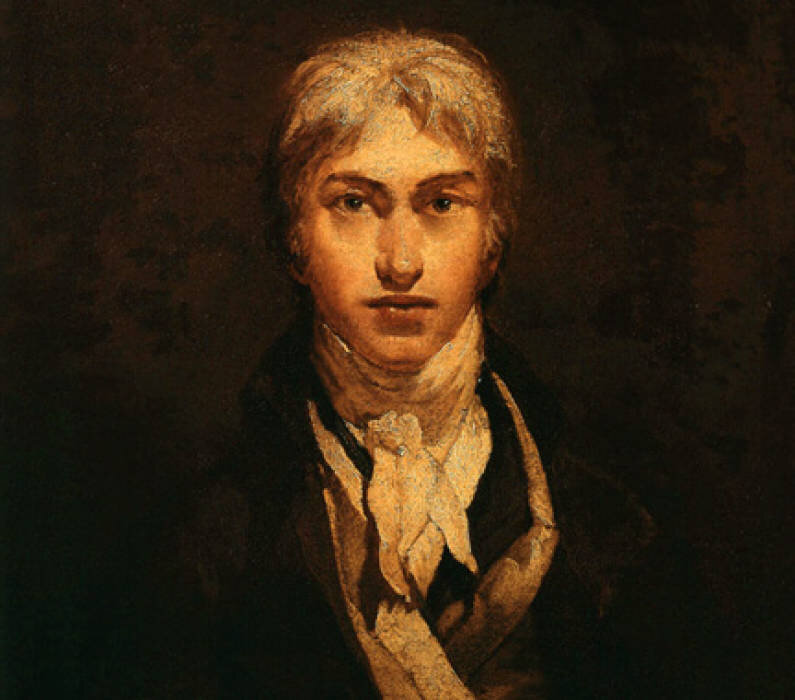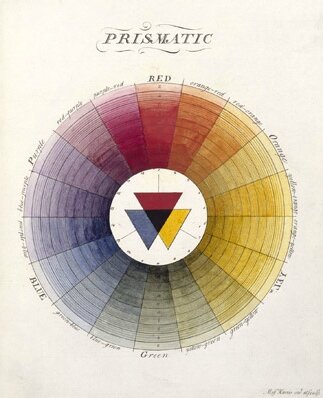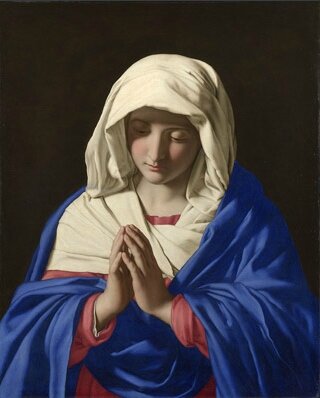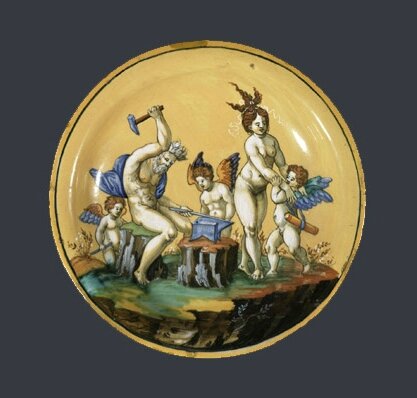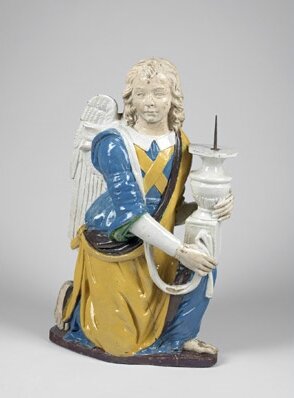![_75415801_75415800]()
Elisabeth Louise Vigée Le Brun, Self Portrait in a Straw Hat, after 1782. Oil on canvas, 97.8 x 70.5 cm. Photo: The National Gallery, London.
LONDON.- 'Making Colour', the first exhibition of its kind in the UK, offers visitors an exceptional opportunity to discover the wide-ranging materials used to create colour in paintings and other works of art. Using the National Gallery’s own paintings and loans from major UK cultural institutions, the exhibition traces the history of making colour in Western paintings, from the Middle Ages to the end of the 19th century.
The exhibition brings together the worlds of art and science to explain how artists overcame the technical challenges involved in creating colour. Work on this subject has long been a specialism of the Gallery's internationally recognised Scientific Department. 'Making Colour' shows the material problems faced by artists in achieving their painterly aims, the breakthroughs they struggled for, and the difficulties they faced in creating works of art that were both beautiful and enduring. 'Making Colour ' looks at its subject from multiple perspectives. It examines the origins of paint sources – be it the natural world or human invention – and their supply, manufacture and application, as well as their permanence and colour effect.
The rich and diverse display with National Gallery paintings at its core is part of the 'National Gallery Inspires' programme of exhibitions. Drawn from the National Gallery collection, the exhibitions take a fresh view of National Gallery paintings alongside special loans and featuring world-leading research by Gallery experts. 'Making Colour' shows the central importance of colour to painting, but also incorporates minerals along with textiles, ceramics and glass, demonstrating the material connections in these sister arts.
The exhibition begins by examining how theories of colour – such as an awareness of primary colour, or of the colour spectrum – have influenced painters' use of pigments, and their quest for new materials. Visitors then journey from lapis lazuli to cobalt blue, ancient vermilion to bright cadmium red, through yellow, orange, purple and verdigris to deep green viridian in a series of colour-themed rooms. Finally, they enter a dazzling central room devoted to gold and silver. These metals were of fundamental importance to the colour effects of European painting through many centuries, although they do not appear on the traditional colour wheel.
'Making Colour' is illustrated at every stage by National Gallery paintings, complemented by selected objects on loan, such as Joseph Mallord William Turner's paintbox. The exhibition includes Claude Monet's 'Lavacourt under Snow' (about 1878–81) on display with lapis lazuli figurines from the British Museum and the Ashmolean Museum, Oxford. Anthony van Dyck's 'Lady Elizabeth Thimbelby and her Sister' (1637) and elaborate majolica plates from the British Museum help to illustrate the story of yellow. In the red room Degas's 'Combing the Hair ('La Coiffure')' (about 1896) and Masaccio's 'Saints Jerome and John the Baptist' (about 1428–9) are displayed alongside fragments of beautiful crimson velvet brocade on loan from the Victoria and Albert Museum, London.
The exhibition is complemented by a scientific experiment that introduces a new world of contemporary and scientific thought on colour. It deals with human colour perception, and the degree to which it is individually variable. It will also consider the ways in which the brain processes different visual information – for example in lighting paintings – and the impact that this has on our perception of colour.
The computer-controlled experiment in lighting and perception will be presented beside the Sainsbury Wing exhibition galleries, designed to demonstrate how we perceive and register colour, and to show that the eye and brain respond to colour in unexpected ways. The experiment has been developed with the advice of Professor Anya Hurlbert, Professor of Visual Neuroscience and Director of the Institute of Neuroscience, University of Newcastle and the support of the Wellcome Trust.
Ashok Roy, Director of Collections at the National Gallery, said: “Art and science really do come together in Making Colour. By exploring the materials that make up the array of artists’ pigments, we can begin to comprehend some of the historic circumstances and difficulties in creating colours that we now take for granted. The inclusion of objects such as early textiles, mineral samples and ceramics ensures an enticing display that provides a new angle from which to approach familiar works in the collection.”
Caroline Campbell, Curator of Italian Paintings before 1500 at the National Gallery, said: “Artists from the Middle Ages to the present day have sought to find suitable pigments and colours. This exhibition is a wonderful opportunity to celebrate this quest for colour. Thanks to the work of our Scientific Department, we can add another layer to our understanding of how artists created such beautiful images.”
![richter]()
Joseph Mallord William Turner, ‘Self Portrait’, about 1799, Tate Gallery, London © The Art Archive / Tate Gallery, London / Eileen Tweedy
![00b6c4cf08cfae0c0201b6223e1ba3d3a370904e0f3566b3c0cce5350971326a]()
Pierre Auguste Renoir, ‘Portrait of Claude Monet’, Musée d’Orsay, Paris © RMN (Musée d'Orsay) / Jean-Gilles Berizzi
![5d9291fe7aab2a39b51b1c60da5fcde001b0acd3dc25f725fea11110167c6b40]()
Anthony van Dyck, ‘Lady Elizabeth Thimbelby and Dorothy, Viscountess Andover’, about 1637. Oil on canvas. 132.1 x 149 cm © The National Gallery, London.
![7b7e002a9e0936cd18f5c3f58e3b8dd817b1d8800e83e200fd30d928d9247ac1]()
Hilaire-Germain-Edgar Degas, ‘Combing the Hair ('La Coiffure’)’, about 1896. Oil on canvas. 114.3 x 146.7 cm © The National Gallery, London. Photo: The National Gallery, London.
![8eca079bbadc07321e3f1c953c0491a028fa144e7be79dca5531ef340031145c]()
Masaccio, Saints Jerome and John the Baptist, about 1428-9. Photo: The National Gallery, London.
![9cd33ede20cefeab9301234bc0424e51951438fdeadf680f0752165ec9f035e3]()
Camille Pissarro, The Avenue, Sydenham, 1871. Oil on canvas, 48 x 73 cm. Photo: The National Gallery, London.
![177d38b0f4bed231ff6189745761597280682723d3bfcc2d7239c954f3174bda]()
Moses Harris,‘The Natural System of Colours’, 1769/1776. Hand-coloured etching. 37 × 27.7 × 1.5 cm © Royal Academy of Arts, London. Photographer: John Hammond
![538f51569061a64b347d3ceb606da4937288d6127ad9e4a1f2e0de955f68524f]()
Gherardo di Jacopo Starnina, ‘The Beheading of Saint Margaret (?)’, probably about 1409. Egg tempera on poplar. 42.3 x 65.2 cm © The National Gallery, London
![2512e4d9c6d5f2a13b216c9e7d8bd1febaefda966214ea0a310688986c8ee18c]()
Replica of a section of Florentine late fourteenth century painting. Gold leaf and egg tempera on panel. 30 x 20 cm © Hamilton Kerr Institute
![7278bde4aa4a782c2498fc802433b523]()
Sassoferrato, ‘The Virgin in Prayer’, 1640-50. Oil on canvas. 73 x 57.7 cm © The National Gallery, London
![679302e077ce7d9773e35168e906e4aa04e6eb555e8661774114b0d2c23f4522]()
Francesco Xanto Avelli, Shallow saucer bowl, with vulcan at his forge with Venus (on the front), 1539. Maiolica. Diameter 17.1 cm. The British Museum, London© The Trustees of The British Museum
![affiche_propangada_800x533]()
Philippe Rousseau, ‘A Valley’, about 1860. Oil on canvas. 81 x 99.7 cm © The National Gallery, London
![b25b805051912a4583eb88e8a14349fb7af73aabf7f373cb635f30b7fe07f14c]()
Della Robbia family, Kneeling Angel holding a Candlestick, c.1500-50. Terracotta painted in coloured tin glazes. 76 × 49 cm © The Fitzwilliam Museum
![c]()
Sandro Botticelli, ‘Saint Francis of Assisi with Angels’, about 1475-80. Tempera and oil on wood. 49.5 x 31.8 cm © The National Gallery, London













